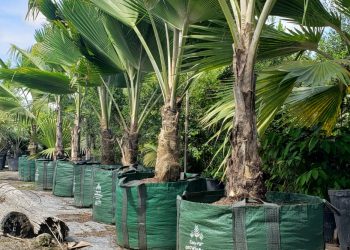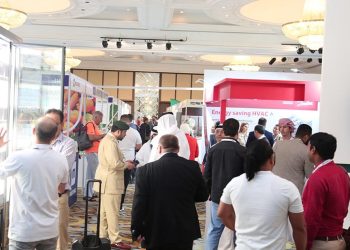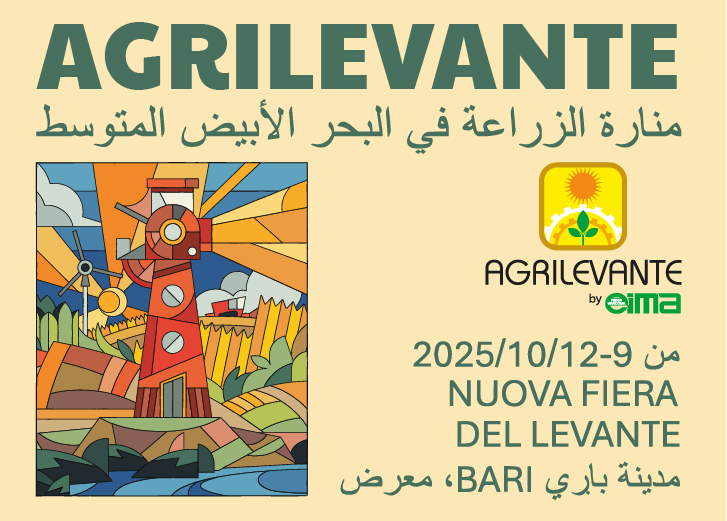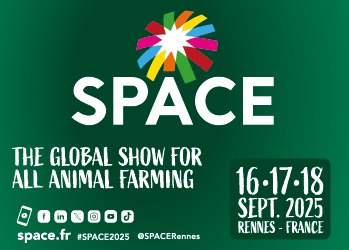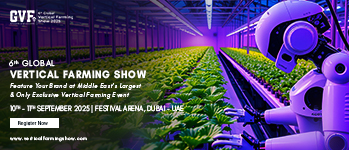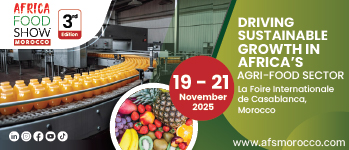Faced with unprecedented fivefold price increases for gas and electricity, many growers are taking steps to reduce greenhouse energy consumption. However, this needs to be done without affecting plant activity, otherwise plant health and yield will suffer. Even high-tech computer-controlled greenhouse operations will need to examine their climate and root zone management strategies. Sticking to the norm is not an option. In this article we outline how you can manage energy input and still keep the plants active for a healthy harvest. Growers need to reduce their total energy inputs to keep their cultivation costs under control. They will therefore have to revise their temperature, lighting, screening and irrigation strategies to keep their crops active and healthy to produce commercial yields. Many growers will be reducing 24-hour temperatures, which will mean longer fruit development times and may produce a higher than anticipated fruit load prior to the first harvests. Planting time and density strategies (for tomatoes) may also require adjustment. If not, there’s a greater risk of diseases and poor fruit quality as a result of weakened plants. Reducing the energy input to manage production costs also requires changes to the irrigation strategy. The focus lies on preserving sufficient plant activity and monitoring the root zone conditions, especially during winter and early spring. The greenhouse climate needs to stimulate plant activity. That means attending to all three areas of crop management: the climate immediately around the plant, the plant itself, and the root zone. Growers must work on these three focus areas together to create optimum growing conditions for the plant.
Keeping plants healthy depends on a complex balance of conditions, particularly on the interaction between: • light and temperature
• humidity, ventilation and transpiration
• irrigation and nutrient uptake.
All of these need close control, especially this year (see sidebar for a summary of tips and advice).
Take care when reducing (growing) light and radiant heat
Growers are understandably replacing HID lights with more energy efficient LED lights. However, HID lights also produce a lot of radiant heat and just replacing them with LEDs can actually reduce plant activity. In these circumstances growers will have to increase the pipe temperature to compensate for the lower heat output from the lamps.
Increased use of thermal (energy) screens like Ridder’s Res-10-FR will help save energy by ‘insulating’ the greenhouse. They can also protect plant temperature, particularly the plant’s ‘head’ temperature, by reducing long-wave (IR) heat emission to maintain plant activity, especially during the night. Pyrgeometers to measure IR radiation allow growers to see what is happening and will give a better understanding of screen control. Growers may also use lower outside light intensity thresholds for turning off growing lights, but this will require adjustment to the 24-hour temperature. It makes sense to spend time discussing all this with colleagues and advisors to gain new insights.
Humidity, ventilation and transpiration
Greenhouse humidity is just as important as temperature, and deserves equal attention. Sufficient humidity is needed to keep the stomata open for transpiration so that it occurs during the day and at night. However, limited air movement or too low an air exchange can lead to growth issues. When it’s cold outside, a lot of humidity will be removed by condensation on the glass.
The rate at which air is exchanged from the greenhouse will depend on the absolute humidity (AH) below and above the screen, and from there to the outside air. Growers should pay more attention to steering based on AH to save energy, and so optimize their heating, venting and screening (humidity control) strategies.
Growers should maintain their focus on creating air movement for plant activity (air movement stimulates transpiration). There are, for example, many new developments in fan technology, which offer more efficient ways of creating air movement rather than using the pipe heating.
Water flow and nutrient uptake reflect plant activity
Water and fertilizer uptake will naturally react to changes in the greenhouse climate. Meaning that the irrigation strategy must also be adjusted to the new situation.

Water and nutrient flow through the plant are key parameters for showing plant activity. These flows are driven by transpiration. Growers will need to measure as close as possible to the plant to gain the necessary insights. The most direct way is to attach sensors to the plant stems themselves so they can measure water flow, however our understanding of what to do with this information is still limited. These new sensors can therefore be best used with systems like GroSens (Grodan) or ProDrain (Ridder) to obtain more insight into how the plant is taking up water and fertilizer.

Key substrate parameters to follow in the irrigation strategy are the Water Content (WC), Electrical Conductivity (EC) and pH (see Figure). The pH will indicate trends in vegetative (higher pH) or generative (lower pH) growth. Regularly monitoring these parameters can help tell you when and where to adapt climate set points to improve plant activity.
Weekly sampling of substrate and drain nutrient levels is important, especially two weeks before and after the first harvest. Focus on maintaining the correct potassium levels in the substrate (e.g. for tomatoes it is 6-8 mMol/l). Samples should come back from the laboratory within days because nutrient levels can quickly become unbalanced.
When using bore hole (well) water for irrigation, elements such as sulphates and sodium can quickly increase over time when the irrigation water is recycled. That can also impact the availability of essential elements, especially if irrigation EC is (structurally) too low and combined with limited irrigation volumes per day.
Variations in daily irrigation
The irrigation volume should be compared to the volume of drain water received. This will indicate the uptake from the plant, which is a value that can be visualized on the climate computer. Daytime irrigation levels are critical. Growers should look carefully at the volume of drain they need per 24 hours for leveling differences in the percentage of WC or the EC in the substrate across the greenhouse.
In winter, if there is too little water uptake during the day, the substrate EC values can decrease because the plant will be taking up all the fertilizer. If the irrigation EC is also reduced this will further reduce nutrient availability for the plant (the exact opposite as in summer!). In winter, if the EC values decrease over two or three days growers should look critically to their climate strategy and adjust this to stimulate ‘uptake’ before adapting their irrigation strategy. However, if as a grower you observe substrate EC moving closer to the irrigation EC your first response should be to increase the irrigation EC and/or at the same time stimulate plant activity, which will also lead to a higher irrigation demand.
The daily irrigation strategy should reflect growth and plant performance. Stimulate root growth in the morning by optimizing the irrigation start time. Focus on increasing fertilizer uptake in the middle of the day to supply the building blocks (fertilizer) for plant growth and development. And focus on water uptake (root pressure) at the end of the day to increase fruit size by making the root temperature higher than the air temperature and, if required, adding an extra irrigation in the early evening.
The decrease in the percentage of WC overnight (from last irrigation day 1 to first irrigation day 2) provides growers with valuable information on plant activity. The rate of decrease in WC from the last irrigation to sunset, and from sunrise to first irrigation are the most important parameters to monitor because they indicate how active the plants are at key moments in the day. Stopping irrigation earlier or starting later – or even better adjusting the greenhouse climate settings (lighting, heating, air flow, humidity) will lead to a better crop performance if the rate of WC (%) decrease is too low.
Irrigation with low light levels
At the start of cultivation in winter, irrigation volumes will depend on light levels (and crop growth stage). On dark days (<100 Joules/day), an active tomato crop can consume close to 1.0 l/m2/day. With high-intensity growing lights, that can increase to 4.0 l/m2/day (assuming 200-250 μmol/m2 18 hours/day). However, in both situations the WC percentage should decrease at a rate >1% per hour, and at night it should decrease at >3% per 6 hours. These figures, along with the relationship between maintaining a stable substrate and irrigation EC (ECs-ECd >1) are very useful indicators that water and fertilizer are being supplied in line with plant activity.
Dark days with high outside humidity will create very passive conditions inside the greenhouse and need particular attention. The plants are less active under these conditions and require less irrigation. Lower or zero drain volumes on these days are perfectly acceptable. EC in the substrate may rise but should be corrected on brighter days. Again, monitoring systems like GroSens and ProDrain are useful tools to aid decision making.
The table below outlines guidance for acceptable substrate EC levels in relation to light intensity.

Table: Acceptable EC substrate in millisiemens/cm in line with seasonal radiation levels (shaded EC values are standard recommended values for crops).
However, please remember that substrate EC and drain EC are not the same, especially in winter! For example, on dark days, periods with low radiation intensity (<400 Watt/m2) and low light levels (<800 Joules/day) may accept limited drain (<1 l/m2). Here, the drain EC will be significantly higher than substrate EC so growers may make wrong conclusions if steering on drain EC.
Cooperation between suppliers
Computer control helps greenhouse systems to act as an integrated whole. The greenhouse climate affects the root zone, so you need cooperation between climate control suppliers like Ridder and substrate suppliers like Grodan. Equipment suppliers themselves need to look at the whole system in which their products operate, meaning cooperating within the chain.
Keywords: greenhouses, horticulture, energy, saving, sunlight, ventilation, irrigation, nutrients, drain water, substrate
Ridder and Grodan have a history of co-operation, which is essential for success in horticulture. Ridder provides systems to create the ideal growing environment – from mechanical systems to digital services. Grodan concentrates on the root zone, with a range of stone wool substrates and irrigation advice for a sustainable level of production.
Saving energy – some highlights Light and heat
• Be careful of lower radiant heat when upgrading from HID to LED lighting, and focus more on temperature and plant activity.
• Use screens to stimulate plant activity by adjusting plant temperature and radiant heat loss. Humidity and ventilation • Make best use of the hours during the day you are getting ‘free energy’, and supply energy when that will give you maximum returns.
• Stimulate air movement by using fans to increase transpiration. Increasing the heating pipe temperature at specific moments of the day can do this too, but the focus should be on maintaining sufficient air movement and an active climate.
• On dark and passive days, varying the pipe temperatures during the day will have more effect with the same total energy input than a constant pipe temperature that is too low. Water flow and nutrient uptake • Combine various sensors to give good insight into plant activity.
• Monitor substrate and drain water volumes to understand uptake.
• Weekly sampling of nutrients is recommended in winter, especially two weeks before and after the first harvest. • Climate and irrigation strategy should reflect the different times of day and your goals in plant performance
. • Dark days will need particular attention to the irrigation strategy
For more information :- https://ridder.com/









